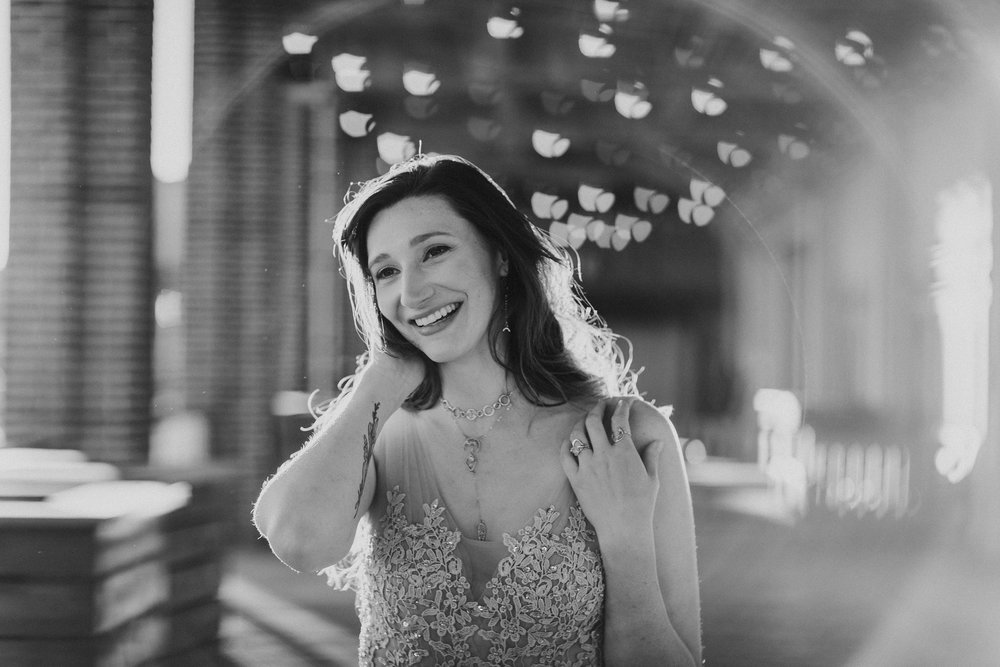Every small photography business needs a plan for success.
In 99.99% of photography startups, success or failure hinges on your ability to realistically plan ahead. Unless you have a Scrooge McDuck level of money hidden away somewhere, every decision you make – especially those that are financial – have the potential to bring you more new and exciting clients, or have the potential to just bring wasted potential and debt.
Now, don’t let this discourage you! One of the most exciting parts of starting a real business is mapping your way to achieve realistic goals so you can end up at your future destination of your “dream job.” While a few people might be lucky enough to have overnight success, most people need to work hard and diligently for it.
Many photographers we have talked to that have “made it” tell us it takes years to build your brand, your presence, and make your business profitable. We can believe it. There is nothing more frustrating than having a mountain of necessary business expenses ahead of you, and another couple of mountains of trying to figure out all the essentials like networking with other industry professionals, making a marketing plan, educating yourself on photography techniques, figuring out how to account for all your expenses, paying taxes, keeping track of mileage…the list goes on forever.
Our intention today is to show you how you can put together a simple business plan to get your photography business off the ground. This comes from real-life human beings just like yourself. We are not at an insane level of success right now, but are continuing to see steady traction in our business, and constantly are achieving realistic milestones in our business as expected – or better than we would have expected in some areas.
things to consider when putting together your business plan
Formally speaking, a business plan can be as simple or complex as you want it to be – depending on your intentions. For some, drafting a business plan might be a legitimate and legally binding document that you plan to present to prospective investors. As a photographer, this is probably not your intention, and if it is, you might want to look away here as the type of business plan we aim to help you put together is one that is more ideological and rooted in our own experience with operating our photography business. This means we have gathered some hard facts that are beneficial to think about, but especially when starting out, we didn’t have everything laid in stone – just a general direction to go in.

At a high level, the things you need to think about before actually writing out a business plan include things like:
- What am I going to offer that is different from other photographers in my market area?
- Where do I want to do business?
- How much money do I need to make to live comfortably?
- What should my business name be?
- How much money do I need to get good gear?
These are just a few initial considerations. As you grow your business, you will face many questions and situations you may have never even considered. It seems like every week we come across new scenarios (some challenging), and aim to find solutions to effectively manage them ourselves.
Making a business plan – determining what you need, what you will offer, who your clients will be, and how you will serve your clients
At it’s most fundamental form, we will lay out a basic wedding photographer business plan that covers 4 main components of your business.
1). Determine what you need
If reality hasn’t set in, let us give you a reality check. Starting your own business is expensive. There are absolutely other industries that cost more, but as a beginning photo service you should expect to spend around $20,000 – $30,000 in your first year if you are in need of updating all of your equipment. In total for us, in the course of 2 years, we have spent in the ballpark of $50,000 – $60,000 in expenses for all equipment and services we use.
There are additional overhead costs for products and services that will make your life easier, as well as the life for prospective clients looking to book with you.
We have produced quite a few articles discussing some of the gear we frequently use. We would highly suggesting our Essential Equipment for Wedding Photographers article as a good starting point on physical gear such as camera bodies, camera lenses, flash options, and so on.
As far as software services go, we use a handful for difference purposes.

For example, we use Honeybook extensively for the purpose of preparing contracts and invoicing. It also makes booking with us much easier as we allow debit/credit card transactions as opposed to just cash or check. We use Pixieset for client galleries, and this functions as a store front for purchasing prints and other physical goods.
Other than these, we also use MileIQ to help track our vehicle mileage (this is invaluable for writing all of our driving off on our taxes at the end of the year) and Microsoft Office 365 for accounting (Excel), emailing (Outlook), and writing notes (Word). Going hand in hand with photography, we also frequently use the Adobe Suite of products including Lightroom, Photoshop, and Illustrator for editing photos and assembling in different ways as needed. As a one time purchase, we find Photo Mechanic to be a huge time saver for culling photos, too!
Oh, and let’s not forget insurance for your business. Through Hiscox insurance we have a good policy covering both our gear and professional liability, and pay on a monthly basis for this.
All in all, these products and services (some a single purchase, some recurring annual costs) cost us about $3,000/year to maintain.
The good news? Once you get over the hurdle of having most of your core gear, you should not have to expect to spend too much on a yearly basis. Certainly, we don’t expect to spend 10’s of thousands of dollars in year 3 of our business as most of our gear should suffice then.
Your specific situation will differ, of course. Not to mention, what you need in gear may be different depending on the type of photography service you aim to offer. We believe there is more cost associated with a wedding photographer – who may need a wider range of lenses and more backup cameras than a studio photographer who doesn’t often go to uncontrolled and constantly evolving shooting environments.
One last thing: if you can’t afford everything upfront, it is essential that you list out the items of most importance to you. As an example, we have gradually purchased new lenses over the past 2 years as they became affordable for us, and chose certain lenses over others initially intentionally.
Related: The Perks of Using MileIQ for Your Photography Business
2). What will you offer?
The next step, and a vital component of your business plan, is determining what you will offer prospective clients. Just saying “I’m going to take pictures for people!!” is way too vague. You need to create some package ideas that are enticing, and reflect an understanding of the market you operate in.
As wedding photographers, it is easier for us to speak in the context of wedding package pricing – your packages are not just for the photos, but rather your time (how many hours do you shoot) and what other things are included in the price. If you review the pricing on our website, you will find in some packages we include an engagement session & Day After session. We also include print credit, as well as our wedding guide (which we put together over the course of several months). These are all things that add value, and help to distinguish your packages from others.
If you feel overwhelmed, don’t worry about it! It is natural, and speaking from our experience, it takes much time and refinement to find offerings that work for you. The best place to start is by checking out other photographers in your area and see what they are charging, and what they are offering for the cost. Not to mention, reviewing their online portfolios to compare your work.
3). Who will be your clients?

One of the most challenging, but fun and exciting, aspects of branding your new photography business is identifying your clientele. It’s not to say you wouldn’t serve everyone in theory, but the reality is that you should be targeting your brand towards a specific group of people. Based on your pricing, you will immediately be attracting certain people and pushing away others. When people see our wedding photography packages begin around $3k – the immediate response will be “this is out of my budget” or “this is in my budget” or, maybe less likely but still possible, “this is below my budget!!”
Other attributes will immediately dictate the type of clients you will attract (and the type you will turn off). The aesthetic of your image edits, framing/composition of your images, the layout of your website, the way you describe yourself in your About page, how you interact with people on social media, etc. As you grow your portfolio, even the types of sessions and styled shoots you showcase will directly influence this.
No doubt, there are many factors at play. It is important to be aware of who you are attracting, and if you start early in attempting to define your ideal clients, it will go a long way to allowing you to better explore photography as an art form and have much more fun doing it. If you are interested in a good read on this topic from a business marketing perspective, check out The Art of Attraction Marketing: The Proven Formula to Get New Leads and Customers Every Day.
4). How will you serve your clients?
Once you’ve started to define who your clients will be, you should aim to tie all of these things up in a summary of just a few sentences (in a more formal business plan as described earlier this would be called an “executive summary”). Be as vague or specific as you would like for now, this will be something you constantly refine as you grow as a business, and begin to better comprehend the service you are actually offering.
Example: “My photography business will provide an inexpensive and transparent photo service to couples with a desire for adventure and who love to share affection with one another, who enjoy a dark/moody image aesthetic, and that want to be photographed in natural environments.”
The above is just a simple example, but you can point to aspects of this single sentence that help define your target audience and how you plan to serve them. Certain characteristics of the people you want to serve (couples – who like expressing their feelings, who enjoy dark/moody aesthetics, and like natural light and nature) overlap with statements regarding what you want to offer as a business (low cost, transparent service); and equally important, your descriptors of others and your business become descriptions of yourself, too. If a prospective client reads this sentence, they will instantly think that you are: inexpensive, transparent, enjoy dark/moody aesthetics, like nature and natural light, and love sharing affection with your partner (if you have one).
after answering the questions above, what’s next?

As we reflect on the time while we were establishing our wedding photography business, it is clear that the 4 questions we reviewed above are significant to have clear answers on. We have also learned that, over time, our answers and expectations had to be tweaked to adapt to reality and the better understanding we came to have of certain things as time went by. With solid answers in hand, you have a firm foundation in place that can be adapted as necessary as you work towards operating a successful business.
The next steps for setting up your business plan is creating an outline of your plans.
You can begin to plug in dates of when you expect to accomplish certain things on a calendar – this may be easiest when it comes to planning out business purchases like “on 5/12 I will purchase a Canon 5D Mark IV.” You will also want to keep track of appointments, prospective client meetings, bookings you do have, etc.
You can also turn this outline into a list of priorities, categorized by level of importance. You will want to list all things you need to achieve in order to reach your long term goal of running a successful business. This might include things like:
- Setting up a quality website (we use Squarespace because it’s easy to use)
- Posting more on social media (we use Later for post scheduling)
- Photographing a styled shoot with friends to build your portfolio
- Practicing aspects of photography you may not be fully comfortable with – for many this is something like off camera flash usage
the one thing we’ve learned
While we have learned much in our time working on your photography business, one significant takeaway we constantly are being made aware of is that there is always going to be more to do. The amount of work is endless, and at times exhausting. However, if you love and enjoy what you do, it won’t be too painful – but you need to accept early that even if you love photography, running your own business will probably come with at least some aspects you begrudgingly do (many of us are looking at you Excel spreadsheet accounting).
If you are serious, driven, and motivated – you can become successful in this industry even with so many people operating as photographers. We wish you well and much success, and if you have any questions about the process of making a simple business plan or anything else, feel free to leave a comment below!!